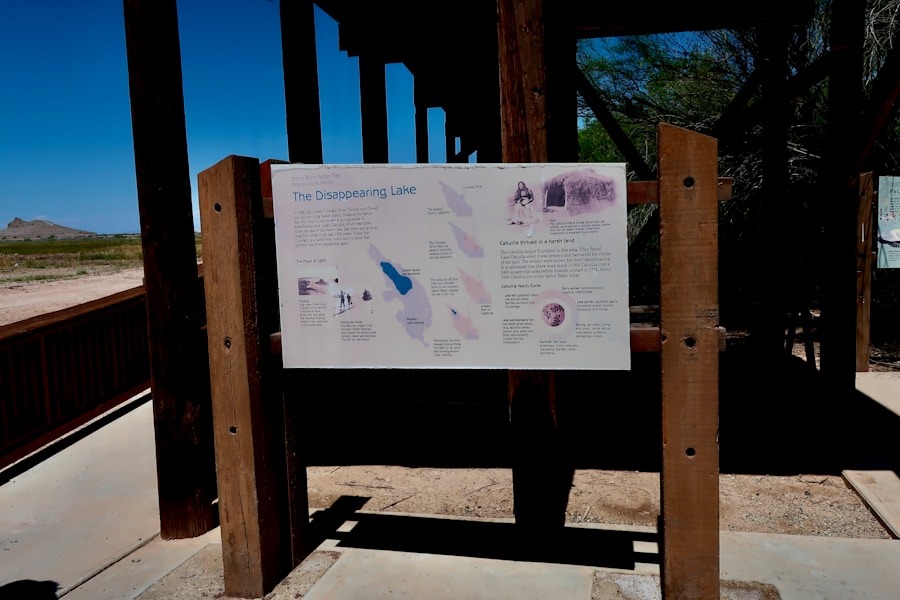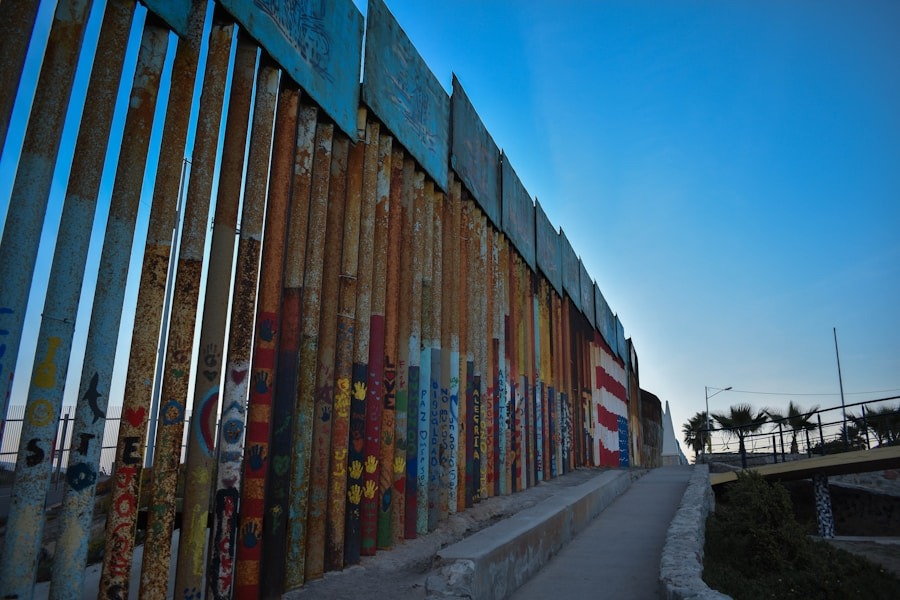Border policies, often designed to regulate the movement of people and goods, have far-reaching implications that extend beyond their immediate political and economic objectives. These policies can inadvertently lead to significant environmental consequences, particularly in regions where natural ecosystems are already under threat. The intersection of immigration control and environmental stewardship is a complex arena, where the enforcement of borders can result in habitat destruction, pollution, and the displacement of wildlife.
As nations grapple with the challenges of migration, it is crucial to examine how these policies impact the environment and the delicate balance of ecosystems. The enforcement of border policies often necessitates the construction of physical barriers, such as walls and fences, which can disrupt local ecosystems. These structures not only alter the landscape but also impede the natural migration patterns of various species.
Furthermore, the increased presence of law enforcement and military personnel at borders can lead to heightened human activity in previously undisturbed areas, exacerbating environmental degradation. Understanding the multifaceted relationship between border policies and environmental impact is essential for developing more sustainable approaches that consider both human and ecological needs.
Key Takeaways
- Border policies can have a significant impact on the environment, affecting deforestation, pollution, wildlife displacement, and climate change.
- Deforestation and habitat destruction are common consequences of border policies, leading to loss of biodiversity and disruption of ecosystems.
- Pollution and contamination of natural resources, such as water and soil, can result from border policies, impacting both the environment and human health.
- Displacement of wildlife and disruption of ecosystems are often seen as a result of border policies, leading to imbalances in the natural environment.
- Border policies can contribute to climate change and carbon emissions, affecting the global environment and exacerbating environmental issues.
Deforestation and Habitat Destruction
Deforestation and Habitat Destruction
One of the most immediate environmental impacts of border policies is the destruction of natural habitats and the resulting loss of biodiversity. The construction of barriers along borders, such as the U.S.-Mexico border, has led to significant deforestation and habitat destruction. The construction of the border wall, for example, has resulted in the clearing of vast tracts of land that were once home to diverse flora and fauna.
Disruption of Ecological Balance
The removal of trees and vegetation for border infrastructure can have far-reaching consequences for local ecosystems. Trees play a critical role in maintaining ecological balance by providing carbon sequestration, soil stabilization, and water retention.
Loss of Biodiversity and Ecosystem Resilience
The destruction of habitats can have devastating effects on the species that rely on them for breeding, feeding, and shelter. Population declines or even extinction can occur when habitats are destroyed. The loss of biodiversity is not only an environmental concern but also undermines the resilience of ecosystems to adapt to changing conditions.
Pollution and Contamination of Natural Resources

Border enforcement activities often contribute to pollution and contamination of natural resources, further exacerbating environmental degradation. The construction and maintenance of border infrastructure require significant resources, including heavy machinery and materials that can introduce pollutants into surrounding areas. For example, runoff from construction sites can carry sediment, chemicals, and debris into nearby rivers and streams, compromising water quality and harming aquatic life.
Moreover, increased human activity along borders can lead to littering and waste disposal issues. In many cases, migrants may leave behind trash or other waste materials in their attempts to cross borders. This litter not only mars natural landscapes but can also introduce harmful substances into ecosystems.
For instance, plastic waste can break down into microplastics that contaminate soil and water sources, posing risks to both wildlife and human health. The cumulative effect of these pollutants can have long-lasting impacts on local environments, making it imperative to consider environmental protection in border policy discussions.
Displacement of Wildlife and Ecosystem Disruption
The enforcement of border policies often results in the displacement of wildlife and significant disruption to ecosystems. As barriers are erected and enforcement activities increase, many species are forced to alter their natural behaviors or migrate to new areas in search of food, shelter, or breeding grounds. This displacement can lead to increased competition for resources among wildlife populations, which may not be equipped to handle such sudden changes in their environment.
For example, species such as the jaguar and various bird populations have been affected by border infrastructure that fragments their habitats. When animals are unable to traverse their traditional ranges due to barriers, it can lead to genetic isolation and reduced genetic diversity within populations. This isolation makes species more vulnerable to diseases and environmental changes, ultimately threatening their survival.
The disruption of ecosystems extends beyond individual species; it can alter predator-prey dynamics, plant-pollinator relationships, and nutrient cycling processes that are vital for ecosystem health.
Climate Change and Carbon Emissions
Border policies also intersect with climate change issues, particularly through their contributions to carbon emissions.
Heavy machinery used in construction emits carbon dioxide and other pollutants that contribute to climate change, further exacerbating global warming.
Additionally, the disruption of natural landscapes due to border enforcement can diminish the ability of ecosystems to sequester carbon effectively. Forests, wetlands, and grasslands serve as critical carbon sinks; when these areas are degraded or destroyed, their capacity to absorb carbon dioxide from the atmosphere is significantly reduced. This not only contributes to rising atmospheric CO2 levels but also undermines efforts to combat climate change on a broader scale.
As nations strive to meet climate goals, it is essential to recognize how border policies may inadvertently hinder progress toward sustainability.
Human Health and Environmental Justice

The environmental impacts of border policies extend beyond ecological concerns; they also have profound implications for human health and environmental justice. Communities living near borders often bear the brunt of pollution and habitat destruction resulting from enforcement activities. For instance, contaminated water sources due to runoff from construction sites can pose serious health risks for local populations who rely on these resources for drinking water or agriculture.
Moreover, marginalized communities are disproportionately affected by the negative consequences of border policies. These populations often lack the political power or resources to advocate for their rights or protect their environments effectively. Environmental justice movements emphasize the need for equitable treatment in environmental policy-making; thus, it is crucial to consider how border enforcement disproportionately impacts vulnerable communities.
Addressing these disparities requires a holistic approach that integrates social justice with environmental stewardship. In conclusion, the relationship between border policies and environmental impact is complex and multifaceted. From deforestation and pollution to wildlife displacement and climate change, the consequences are far-reaching and demand careful consideration in policy formulation.
As nations navigate the challenges posed by migration and security concerns, it is imperative that they also prioritize environmental protection and justice for affected communities. By fostering a more integrated approach that considers both human needs and ecological health, we can work towards sustainable solutions that benefit all stakeholders involved.
One related article to the Environmental Impact of Border Policies is “Challenges to State and Society: Communalism and Secularism.” This article discusses the challenges faced by states and societies in maintaining communal harmony and secular values. To read more about this topic, you can visit the article here.
FAQs
What are the environmental impacts of border policies?
Border policies can have various environmental impacts, including habitat destruction, deforestation, soil erosion, and pollution. Construction of border walls and fences can disrupt natural habitats and migration patterns of wildlife, leading to loss of biodiversity.
How do border policies affect water resources?
Border policies can impact water resources by disrupting natural water flow, leading to changes in hydrology and potential water pollution. Construction of barriers and infrastructure can also affect the natural flow of rivers and streams, impacting aquatic ecosystems and water quality.
What is the impact of border enforcement activities on wildlife?
Border enforcement activities, such as patrolling and construction of barriers, can disrupt wildlife habitats and migration routes. This can lead to fragmentation of populations, loss of genetic diversity, and increased risk of extinction for certain species.
How do border policies contribute to air pollution?
Border policies can contribute to air pollution through increased vehicle emissions from border enforcement activities and infrastructure development. Additionally, construction of barriers and roads can lead to dust and particulate matter emissions, impacting air quality in border regions.
What are the implications of border policies on indigenous communities and their lands?
Border policies can have significant implications for indigenous communities and their lands, including displacement, loss of access to traditional territories, and disruption of cultural practices. Additionally, border enforcement activities can lead to increased militarization of indigenous lands, impacting their sovereignty and self-determination.























+ There are no comments
Add yours